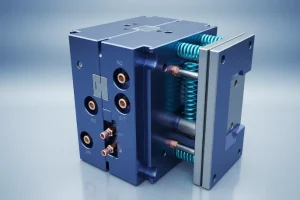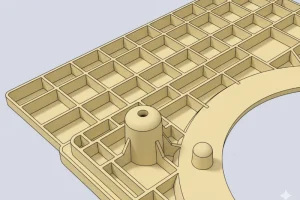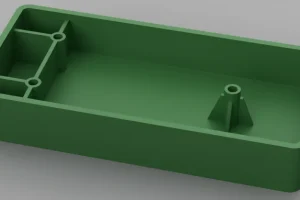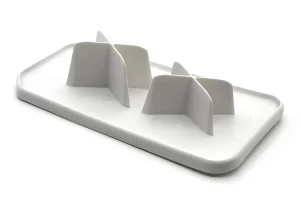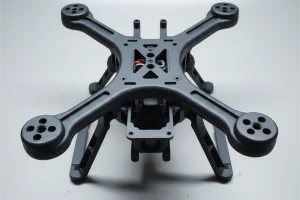The potential output of an injection mold can vary greatly depending on a variety of factors, such as the complexity and size of the product design, type and amount of material used in production, cycle time per part being produced, and available space for additional molds.
All these elements play important roles in maximizing efficiency while ensuring quality control to obtain successful results.
a. The material of the plastic product.
b. The structure of the plastic product.
c. The material of the injection mold.
d. The structure of the injection mold.
e. The number of holes in the injection mold.
f. The type of flow channel of the injection mold.
This article will conduct an in-depth review of the components that influence a mold’s lifespan, providing answers to your queries.

1. How does the material of a plastic product affect mold life?
Plastic materials play a critical role in the efficiency of injection molding processes – their selection can determine how long molds last and how cost-effective production runs are.
a. Not all product additives are harmless; some may be corrosive, capable of degrading molds used in mass production and shortening their lifespan. Such an oversight could lead to costly delays on the factory floor.
b. Durability and strength are key for a variety of products, so some materials require the use of glass-fiber fillers.
These composites– such as PA+GF or PBT+GF –can be hard on tooling over long periods of time, necessitating more frequent replacements than their softer counterparts.
c. In production, material fluidity can be an issue, leading to the need for increased injection pressure and risking decreased mold life.
Unfortunately this process could also affect the number of final parts if carried out over a prolonged period at high temperature with products like PPSU, PPO or their equivalents.
Crafting a plastic product? The temperature needed during production is an important consideration.
Maintaining the necessary high temperatures can help prolong injection mold life and optimize your finalized products. With sound planning, you may find yourself achieving more efficient manufacturing results!

2. How does the structure of the plastic product affect the life of the mold?
When designing and manufacturing a plastic product, the structure of it can have an impact on the duration of life for its accompanying injection mold.
Highly detailed products may require sophisticated molds with many moving components that are prone to wear and tear – thus, requiring more frequent maintenance or even replacement over time.
Conversely, simpler designs featuring fewer details often necessitate less intricate injection molds capable of lasting longer without maintenance needs as significant.
Ultimately, thoughtful consideration regarding product structuring is paramount in order to optimize mold longevity during production processes.

3. How does the material of the injection mold affect the life of the mold?
When choosing materials for injection molds, hardness is an important factor to consider.
Harder metals tend to be more resistant to wear and tear over time than softer ones due to their improved heat-dissipation properties; this makes them better suited for long-term performance in demanding applications.
Additionally, selecting the right molten material can help extend a mold’s lifespan by ensuring it performs efficiently under various conditions.
| Product Quality | Mold Material | Mold Life |
| P<50 | 3D printing/CNC Prototype | 1 |
| 50<P<100 | Silicone Mold | ≤100 |
| 100<P<500 | Resin Mold | ≤500 |
| 500<P<1000 | Aluminum Mold | ≤1000 |
| P>1000 | Steel Mold | >1000 |
4. How does the structure of an injection mold impact its life expectancy?
The structure of an injection mold can have a significant impact on its lifespan in several ways.
A properly designed mold with adequate ventilation, cooling channels and reinforcement can help avoid warping, cracking or other forms of damage that could significantly reduce its life expectancy.
Furthermore, molds with complex structures or intricate details may be more prone to wear and tear, decreasing their lifespan.
On the other hand, a straightforward mold with few moving parts may be more durable and last longer. Overall, an appropriately designed and constructed mold can help extend its usefulness.

5. How does the number of cavities in an injection mold impact its longevity?
When designing an injection mold, consideration must be given to how many cavities there are.
Although increased cavity count can offer higher productivity and output potential, it may also have a shorter lifespan due to its more intricate design with additional moving parts, plus the need for additional maintenance and cleaning.
Finally, selecting the ideal cavity configuration is critical for maximizing its lifespan and achieving desired outcomes.

6. How does the type of injection mold runner affect mold life?
The selection of a runner system for an injection mold is critical; it can be the deciding factor in how long that mold lasts.
Cold runners maintain lower temperatures, meaning they are less likely to damage the molds with heat-related problems than hot runners.
Furthermore, both systems must have well designed and constructed channels to ensure their full lifespan potential.
In sum, understanding what type of runner will work best for each project helps keep your molds at peak capacity!

Conclusion
To maximize the service life of injection molds, selecting high-quality thermoplastics, ensuring appropriate ventilation and cooling within the design, regularly cleaning and maintaining the mold components, along with using appropriate cycle conditions during processing are all key steps. Taking these measures can help increase durability while preventing warping or other damage that could shorten its lifespan.



